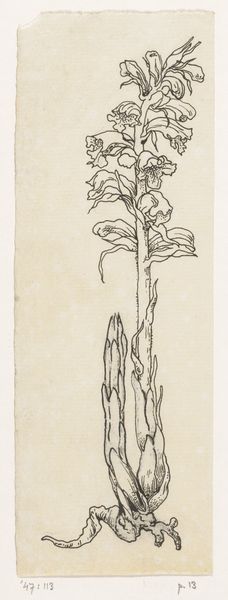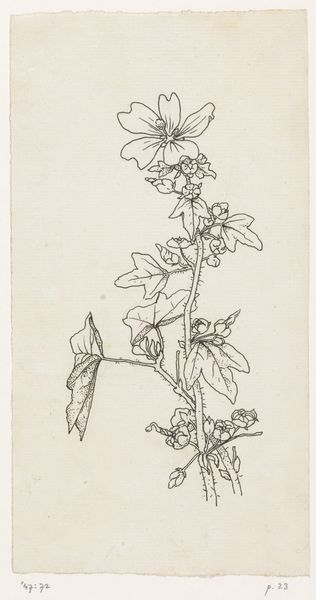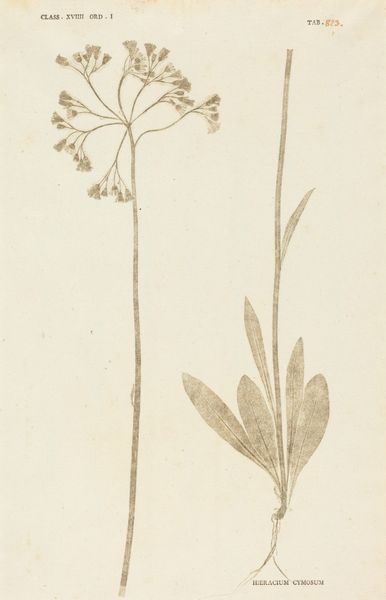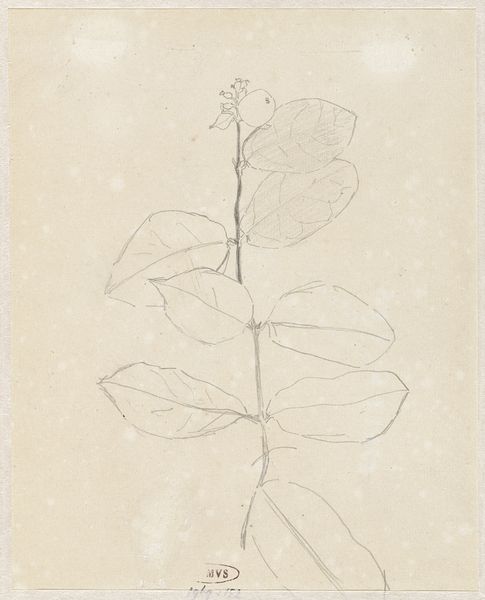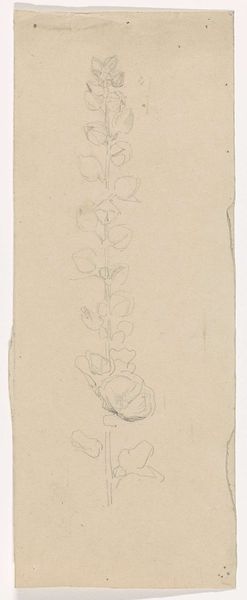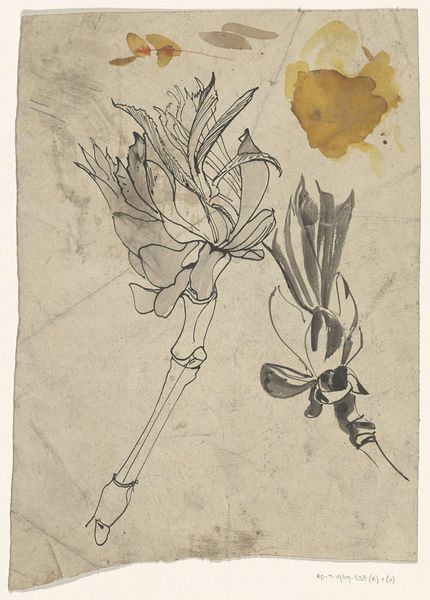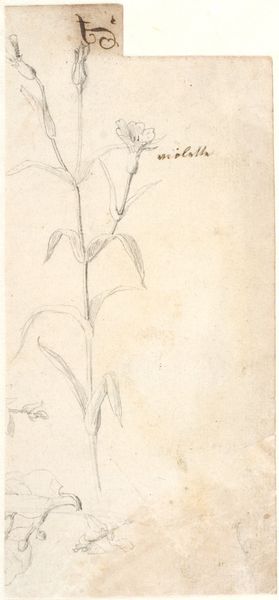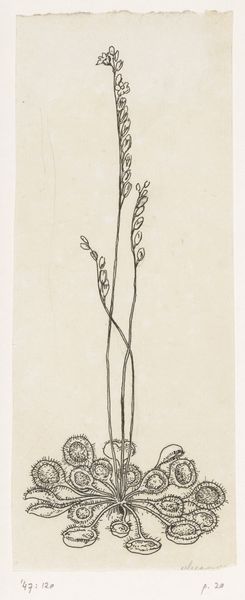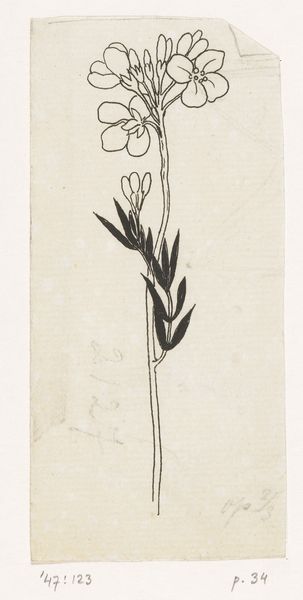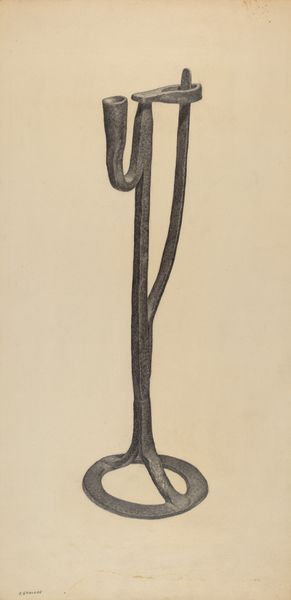
drawing, ink
#
drawing
#
pen sketch
#
etching
#
ink
#
line
#
realism
Dimensions: height 327 mm, width 179 mm
Copyright: Rijks Museum: Open Domain
Curator: The delicacy of line here is what grabs me immediately. It’s as if Roland Holst, sometime between 1878 and 1938, held his breath as he captured this tiger lily with ink on paper. The piece is simply titled "Tijgerlelie," which is Dutch for "Tiger Lily." Editor: It’s funny you say that, about holding his breath. The starkness, the brown paper… It gives me this odd sense of stillness, a preserved botanical specimen pinned under glass almost. Not vibrant or alive, more of an echo of nature. Curator: Well, there’s a precision that aligns with scientific illustration, certainly, which speaks to the broader artistic and intellectual currents of that period. These botanical drawings played a significant role in how we understand our natural world and were valued both as scientific and aesthetic objects. Editor: Aesthetic yes, but in a melancholic, muted key. Those heavy lily petals look fatigued. You can feel gravity tugging, you know? It’s a simple study, just lines really, but I see something about the cycle of bloom and wilt, and what gets left behind on paper. Curator: The economy of the line also points to Holst's expertise as a graphic artist and his interest in simplifying form. His work engaged with a resurgence of interest in traditional printmaking techniques. In that context, this seemingly simple drawing represents an embrace of craftsmanship against the grain of industrialisation. Editor: See, you’re talking craftsmanship, and I’m seeing vulnerability. The lily's not showing off, all blousy and colourful. This tiger lily has this quiet fragility. Maybe Holst, at the time, felt fragile. Perhaps its an unconscious portrait, with those stamens like lonely whiskers? Curator: Regardless of the personal investment or perspective Holst might have projected into the work, I feel the audience finds itself confronted with nature mediated through social meaning and cultural forms. What can we learn and discover about a shared sense of time and the natural world that surrounds us. Editor: You know, you make me appreciate the scientific rigor and contextual backdrop. But next time I pass a tiger lily, I might think of this solitary study and that whisper of mortality it seems to carry.
Comments
No comments
Be the first to comment and join the conversation on the ultimate creative platform.

